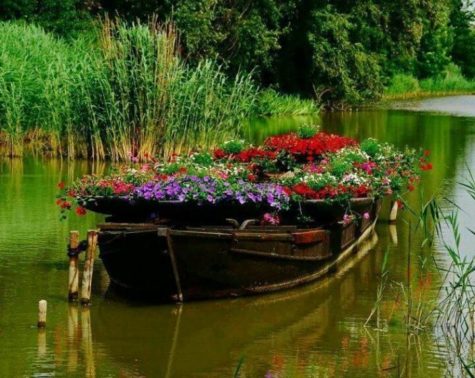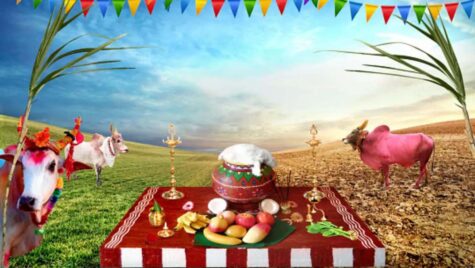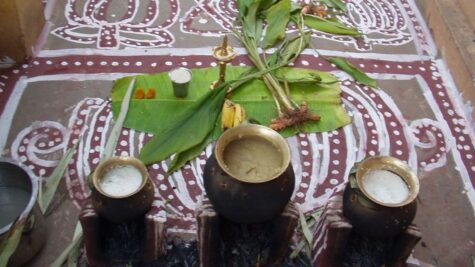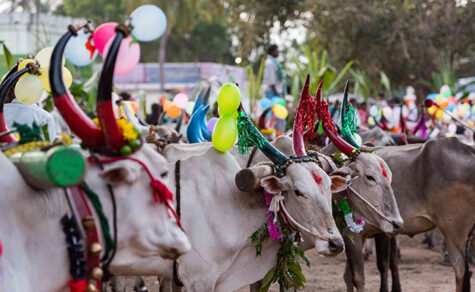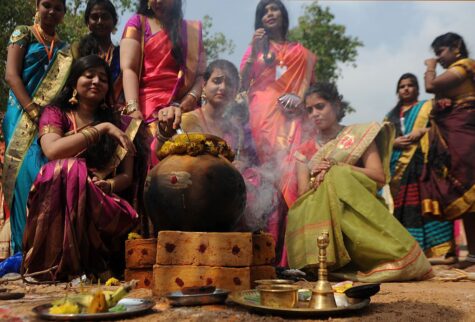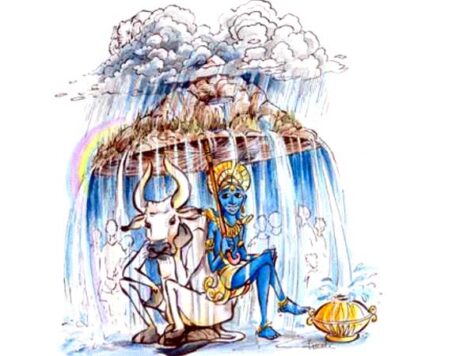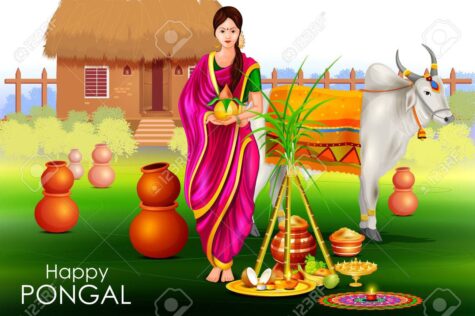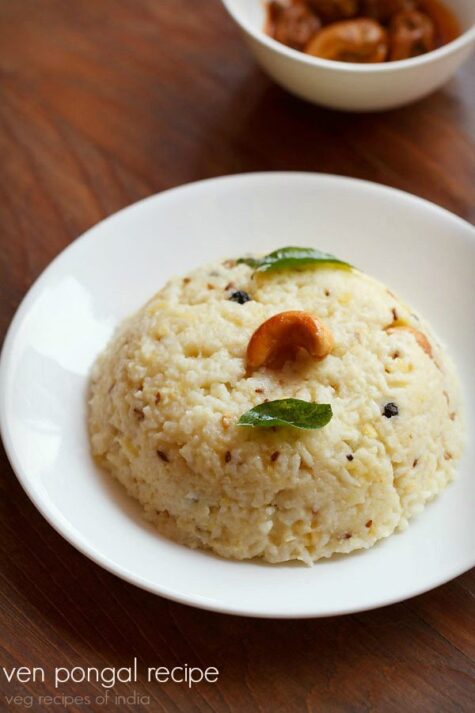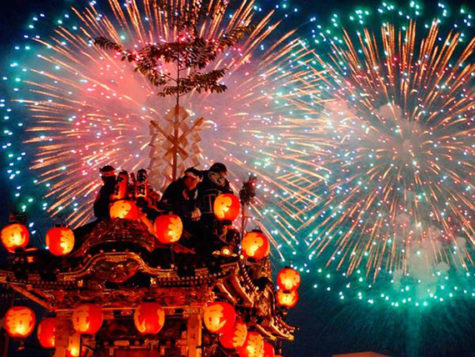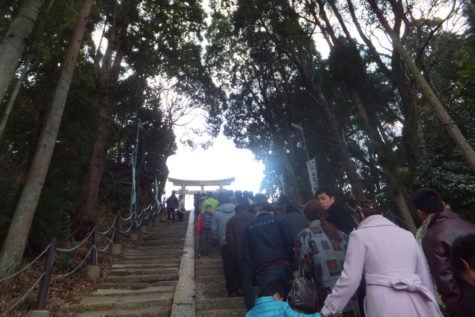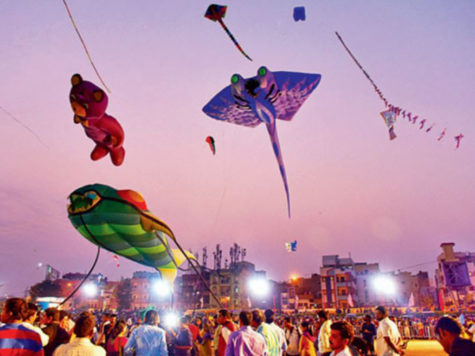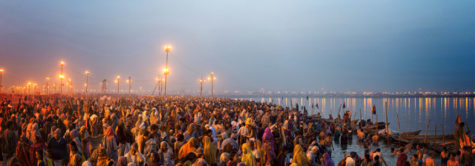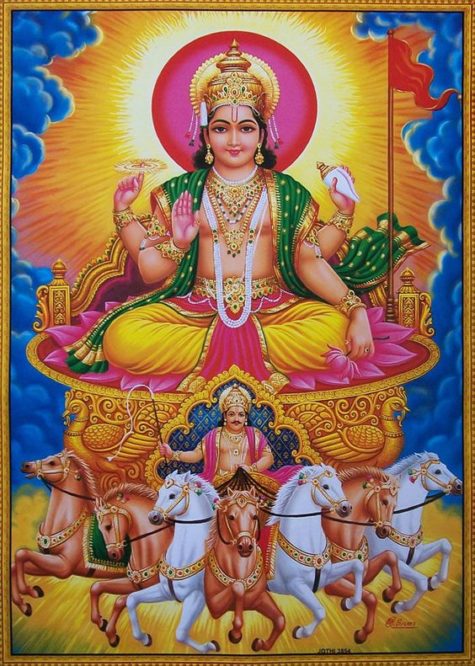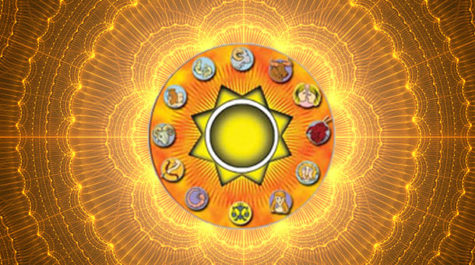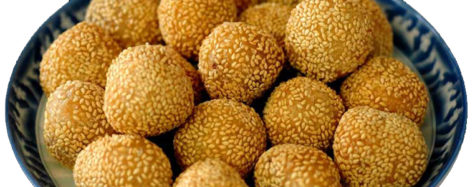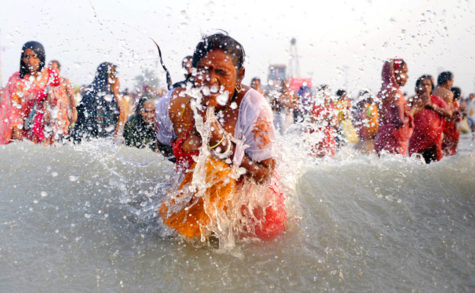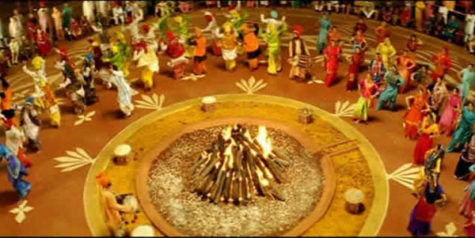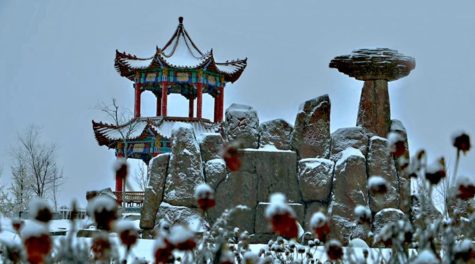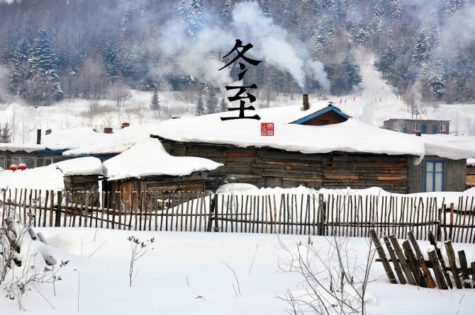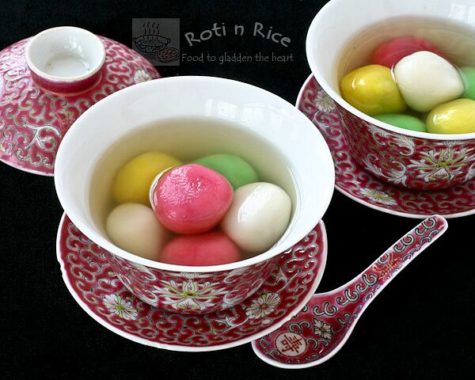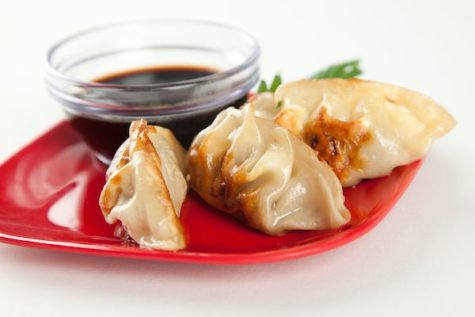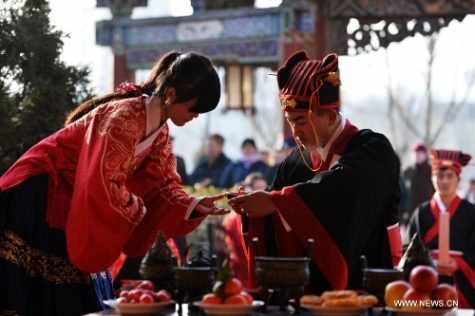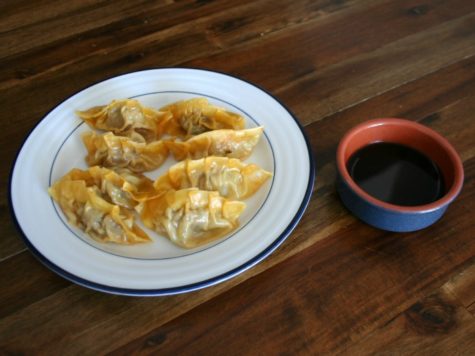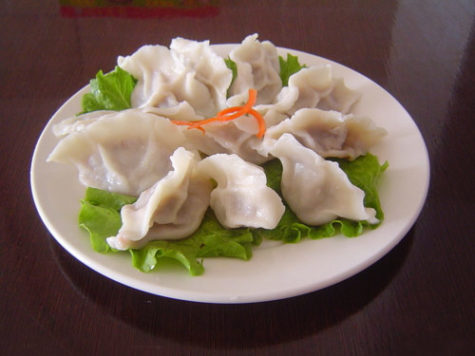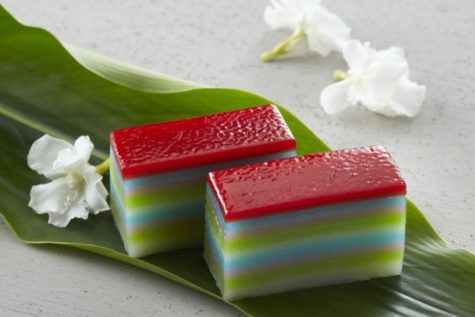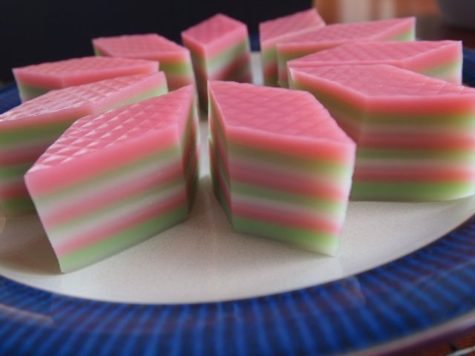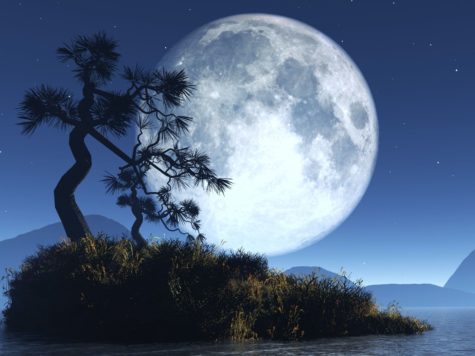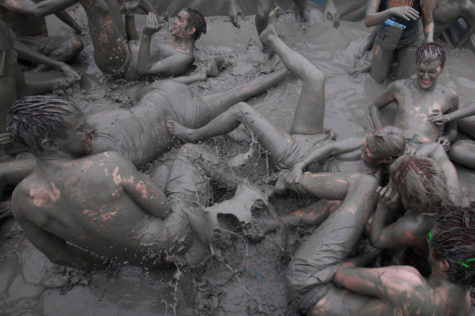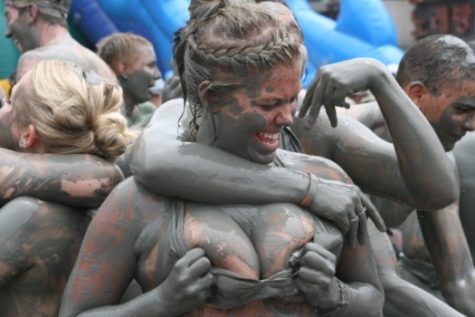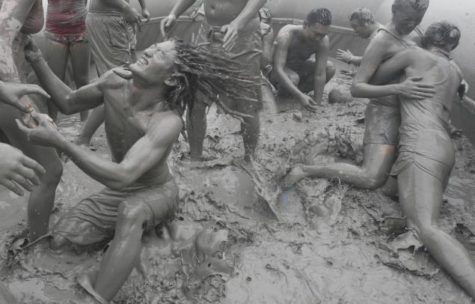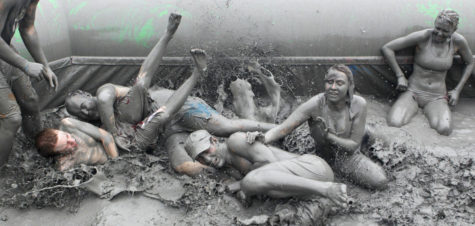Asian Celebrations
The Chinese Dragon Boat Festival was held on the Full Moon in April. There was a procession of decorated boats up and down the rivers and lakes in the moonlight. Everyone participated, for they believed that this pleased the dragons who brought life-energies to the community. They would throw flowers into the water to carry their blessings and wishes.
To the Chinese, dragons were not loathsome creatures to be avoided, but rather wise, powerful beings who could help in many ways. Dragon-lovers of today realize the same thing and court their friendship. Dragons are powerful allies. This is an excellent time to bless boats, whether or not they are decorated as dragons. The ancients said that each boat had a spirit built into it, and if that spirit were dissatisfied or angry, the boat would not handle properly in the wind and waves.
If you have a boat, large or small, consider using a boat blessing ritual to improve its safety and performance. If you don’t have a boat, this ritual can also be used to bless cars, bikes, motorcycles, or whatever you use for transportation.
Note:
Dates for this festival vary widely from year to year, and from region to region. Most generally the dates given are either in May or in June.
From: Moon Magick
Pongal is the first harvest festival of the year and the celebrations go on for four days. This is a sacred festival for Tamilians all over the world and the best celebrations take place in the state of Tamil Nadu. It falls on January 14 this year and the date pretty much remains constant over the years, sometimes it falls on January 15 as well. Pongal is also called Thai Pongal as the festival marks the beginning of the Tamil month Thai. This is considered to be an auspicious one and people celebrate it with much enthusiasm.
Thai month is believed to bring good luck by vanishing one’s problems away and therefore people look forward to celebrating Pongal. The harvest festival is celebrated over four days with each day having a different ritual. Here is how Pongal is celebrated in Tamil Nadu.
Pongal is a harvest festival and since rice is one of the main crops grown here, it is given due importance during the rituals. Even turmeric and sugarcane are grown in Tamil Nadu. The harvest festival is in the month of Thai which is considered auspicious for weddings as well.
Pongal is all about letting go of the past and welcoming new things in life. Pongal is also known as Thai or Tai Pongal. People celebrate it to thank Lord Sun for a good harvest season. The four-day festivities are:
- Bhogi Pongal:
The first day of the four-day festivity is Bhogi Pongal. It marks the last day of Marghazi, Tamil month. People celebrate it together by lighting bonfires and burning discarded items.
The first day of Pongal is celebrated by paying respect to the rain gods who are responsible in ensuring a good crop year. People offer their prayers by thanking Indra for this blessings and ask for a good year again. People also light up a bonfire and throw the items they want to discard in it. In the evening, women sing and dance around the bonfire which helps keep warm as well as the night gets chilly.
- Surya Pongal:
The second day is Surya Pongal. It is dedicated to Lord Sun or Surya Dev. People thank him for providing a good harvest and seeking blessing for happiness and prosperity. On this day, the houses are decorated with banana and mango leaves.
The second day of the harvest festival has more elaborate rituals where the women of the house decorate the area outside the house using white powder in the morning. Then, rice is boiled in milk in an earthen pot outside the house. Sugarcane sticks are used for decoration along with banana leaves and turmeric plant. This rice is offered to the sun god who again is responsible for a good harvest.
The word Pongal translates to boil over and boiling rice signifies its name. On this day, people also wear new, ethnic wear for the celebrations.
- Mattu Pongal:
The third day marks Mattu Pongal. Mattu means cow, cattle or bullock. This celebrates cattle as they provide dairy products, fertilizers and agriculture support. This day of Pongal is reserved for offering prayers to cows who are considered a sacred animal for Hindus.
The cows horns are painted and adorned with bells and flowers around their neck. Women then perform aarti to get rid of any evil eye and seek the animal’s blessings. Cows are then paraded in the village and the tiny bells reverberate their arrival. There is a cheer in the atmosphere and villagers also organize cattle races on this day.
- Kanum Pongal:
The last day is Kanum Pongal. This day strengthens the bond between people. A lot of people come together and celebrate it.
The last day of Thai Pongal celebrations end with a pooja right outside the home. Women wake up in the morning and before bathing, they place a washed turmeric leaf on the ground. Different kinds of rice are placed on it along with sugarcane sticks, betel nuts and more. The pooja performed is essentially for their brothers, to ensure they prosper in life. This marks the end of the harvest festival celebration in Tamil Nadu.
Pongal Stories
There are two major stories that revolve around the celebration of Pongal.
Once, Lord Shiva had asked Basava, his bull, to travel around the world to inform people to eat once a month, have a bath and oil massage every day. Basava communicated exactly the opposite of what he was told. He told people to bathe once a month and eat everyday. This angered Lord Shiva and he ordered Basava to go into exile. He was made to assist people while ploughing. This is why cattle are linked with the harvest.
There is another story to it. According to a few people, Lord Krishna told the people of Gokul to stop worshipping Lord Indra as he was arrogant and was filled with pride. This angered Lord Indra. He caused thunderstorms and flooding. To protect people, Lord Krishna lifted Mount Govardhan on his little finger to provide shelter to people. Lord Indra realized his mistakes and asked for forgiveness from Lord Krishna.
Pongal Quotes and Invocations:
These are actually meant for greeting cards, but I thought they would make something nice to say over a meal, or during a meditation during these four days.
- As you offer thanks to the hero of your farmland – the Cattle, May the festival of Pongal which heralds the beginning of harvest season Bring you happiness, joy, prosperity and wealth. Pongalo Pongal!
We thank sun for burning himself to save us.
We thank plants sacrificing their life for us.
And we thank all the creatures helping us to live in this world for some time.
- The sun shines bright
To guide and lead us the way
Towards bountiful harvest season
May we be blessed with prosperity and joy
May the sweetness of overflowing milk and sugarcane
Fill our home with harmony and happiness
- May the love and affection
Overflow from your heart
like Pongal milk from the pot
Pongalo Pongal
As you shout Pongalo Pongal
To welcome the prosperity and wealth
along with the overflowing Milk
I wish you everlasting happiness and joy
Ven Pongal Recipe
Pongal is a delicious South Indian porridge made with rice and yellow moong lentils. It can be made sweet or savory. Here I share the savory version of pongal recipe known as Ven Pongal or Khara Pongal laced with the wonderful flavors of cumin, asafetida, curry leaves, ginger and black pepper. Not to forget the lovely aroma of ghee, in it.
Main Ingredients:
- ½ cup rice – any medium to short grained or regular rice, 100 grams
- ¼ cup moong dal or 60 grams moong dal
- ½ teaspoon cumin seeds – lightly crushed
- ⅛ teaspoon asafoetida (hing)
- 1 inch ginger – chopped or 1 teaspoon heaped chopped ginger
- 3 to 3.25 cups water or add as required
- salt as required
For Tempering:
- 1 teaspoon cumin seeds
- 1 teaspoon black peppercorns whole or crushed, you can also add ½ teaspoon black pepper
- 1 sprig curry leaves or 10 to 12 small to medium curry leaves
- 10 to 12 cashews – whole or halved
- 2 to 3 tablespoons Ghee (clarified butter)
Instructions:
Pick moong lentils first to get rid of stones if any. Then heat a small pan or a small kadai and add the moong lentils. On a low flame stirring often roast the moong lentils till they become aromatic. The moong lentils only need to be roasted till they become aromatic. No need to brown them.
Now take them in another bowl or you can use the same pan for rinsing. Add rice in the bowl containing the roasted moong dal. Rinse both rice and roasted moong dal a couple of times with water. Drain very well and then add them in a pressure cooker.
Now add the following ingredients:
- Cumin seeds
- Asafetida (hing)
- Chopped ginger
- Salt as per taste.
Pour in 3 to 3.25 cups water. The amount of water to be added depends on the consistency you want and also on the quality of moong dal. Pressure cook on a medium to high flame for 7 to 8 whistles or 11 to 12 minutes.
Let the pressure settle down on its own and then you remove the lid to check the doneness and consistency. If the pongal has a consistency like that of pulao, then add ½ to 1 cup hot water and mix very well.
Both the rice and the moong dal should be cooked very well. If you want you can even slightly mash the cooked rice and moong lentils. If cooked well, then cover with the lid and keep aside.
Tempering:
In another small pan, heat the ghee. Add the cumin seeds. Let them splutter. Then add the cashews. Fry until the cashews become light golden. Once they begin to get light golden, then add black peppercorns and 10 to 12 curry leaves.
Stir very well and fry until the curry leaves become crisp. The black pepper should also be fried well.
Putting It All Together:
Now pour this entire tempering on the pongal. Mix very well. Cover with the lid (with the vent weight/whistle on the lid) and keep ven pongal aside for 5 to 6 minutes. This allows the tempering flavors to infuse with the pongal and the aroma to stay in. Then remove the lid and serve hot with coconut chutney or sambar.
Sources:
Shinto holy day marking a new year. On this day the faithful visit shrines to thank the kami (spirits within objects in the Shinto faith), ask the kami for good fortune, and make resolutions for the year ahead.
Traditionally, Shinto practitioners observe this New Year holiday by visiting the shrines, mostly at midnight and praying for the renewal of their heart, prosperity and health in the year to come. It is also common to visit close friends and family to express good wishes.
This festival concentrates on the deep unrecognized awareness and respect for the divine energy that permeates all forms of life. It is one of the most significant yearly festivals in Shintoism.
Though the New Year is predominantly celebrated on the first day of the year, traditionally the Shinto’s celebrate Gantan-sai for a prolonged span of seven days.
Much like Christmas for Christians, Gantan Sai has become a national holiday in Japan and expanded out past the Shinto religious practices and evolved into a national holiday. It is referred to as the Japanese New Year or Shogatu .It is observed on the first day of the Gregorian calendar i.e. the 1st of January and is the annual New Year celebration of the Shinto religion.
Originally, the date of the Japanese New Year was decided according to the Chinese Lunar Calendar and the date varied each year. However, in 1873, five years since the Meiji Restoration, the people of Japan adopted the Gregorian calendar and fixed the date of Japanese New Year or Shogatu to be the 1st of January every year, and it has been so ever since.
Traditions and Practices:
During this festival, most Shinto’s spend the holiday by visiting sacred Shinto temples at the hour of midnight.
During this visit, they wear their finest clothes and pray that their hearts be renewed and purified of all dirt and uncleanliness.
- Blessings for health, happiness and prosperity are also requested for the upcoming year.
- This festival also witnesses friends and families coming together to wish well for each other.
On this day, people eat traditional food with their families. Gantan-sai day meals involve a special compilation of dishes known as “Osechi”. The typical New Year Day menu comprises of dishes like Ozoni a soup, Mochi with vegetables, Kamabokoa puree of steamed white fish, Kurikinton mashed sweet potato with chestnut and Kuromame sweet black beans.
Source: Gatan-sai
Makar Sankranti (also known as Makara Sankranthi or Maghi) refers both to a specific solar day in the Hindu calendar and a Hindu festival in reference to deity Surya (sun) that is observed in January every year. It marks the first day of sun’s transit into the Makara (Capricorn), marking the end of the month with the winter solstice and the start of longer days.
- Significance: Festival of Harvest, welcome longer days, sun worship
- Celebrations: Kite flying, bonfires, fairs, surya puja in river, feast, arts, dance, socialization
Makar Sankranti is one of the few ancient Hindu festivals that has been observed according to solar cycles, while most festivals are set by the lunar cycle.
Being a festival that celebrates the solar cycle, it almost always falls on the same Gregorian date every year (January 14), except in rare years when the date shifts by a day for that year, because of the complexity of earth-sun relative movement.
Makar Sankranti is observed with social festivities such as colorful decorations, rural children going house to house, singing and asking for treats (or pocket money), fairs, dances, kite flying, bonfires and feasts.
The Magha Mela is mentioned in the Hindu epic, the Mahabharata, thus placing this festival to be around 2,000 years old.
Makar Sankranti is regarded as important for spiritual practices and many people take a holy dip in sacred rivers or lakes, especially Ganga, Yamuna, Godavari, Krishna and Cauvery. The bathing is believed to result in merit or absolution of past sins.
Every twelve years, the Hindus observe Makar Sankranti with one of the world’s largest mass pilgrimage, with an estimated 40 to 100 million people attending the event. At this event, they say a prayer to the sun and bathe at the Prayaga confluence of the River Ganga and River Yamuna at the Kumbh Mela.
Because the festival is dedicated to the Hindu sun god, Surya, people also pray to the sun and thank for their successes and prosperity. The traditional prayer to the sun is the Gayatri Mantra.
The Gayatri Mantra
The mantra is a hymn to the sun which represents both the physical sun and the Divine in all things. Here it is:
Om bhur bhuvah svah
tat savitur varenyam
bhargo devasya dhimahi
dhiyo yo nah prachodayat.
The eternal, earth, air, heaven
That glory, that resplendence of the sun
May we contemplate the brilliance of that light
May the sun inspire our minds.
Chanting the mantra serves three purposes.
- The first is to give back to the sun. The sun gives but never receives. The mantra is a gift back to the sun, an offering of gratitude to refuel the sun’s gracious offering.
- The second purpose is to seek wisdom and enlightenment. The mantra is a request to the sun: May we meditate upon your form and be illumined by who you are? (Consider that the sun offers its gift of illumination and energy to all beings, without judgment and without attachment to the outcome of the gift.)
- Finally, the mantra is an expression of gratitude, to both the life-giving sun and the Divine. The sensibility it evokes is more important than the literal meaning. It’s an offering, a way to open to grace, to inspire oneself to connect to the ancient vision of India.
An Auspicious Period
Makar Sankranti is regarded as the beginning of an auspicious phase or the holy phase of transition. It also marks the end of an inauspicious phase which begins around mid-December. Further it is also believed that any sacred ritual can be performed from this day onwards. The auspicious day of Makar Sankranti marks the beginning of warmer and longer days as compared to nights.
Makar Sankranti is all about forgetting bitter and sad moments which happened in the past and welcoming the new phase of life which is full of purity, knowledge and wisdom.
The Significance of Makar Sankranti
The significance of the Makar Sankranti festival is that it marks the day where there is a significant movement in the zodiac ~ the arrangement of the earth’s dial around the sun ~ and this movement brings about a new change in the way we experience the planet itself.
There are many sankrantis through the year; the two significant ones being Makar Sankranti, and right opposite, after summer solstice is Karka Sankranti. In between, there are many Sankrantis ~ every time the zodiac sign changes, it is called a Sankranti to suggest the movement of the planet, to understand that our life is sustained and nourished by this movement. If this movement ceases, everything about us will cease.
On the 22nd of December, the solstice happened, that means in relation to the sun, the movement or the tilt of the planet reaches its maximum. Now, from this day on, the northern movement is strong. Things really start changing upon the earth. From Makar Sankranti onwards, winter is being relieved step by step.
This movement is also a significant aspect in the way we reap from this planet. There was a time when human beings could eat only what the earth offered. Then we learned how to get what we wanted from the earth; this is called agriculture. When we were hunting and gathering, we only picked up what was there.
It is like when you were an infant, you ate or swallowed whatever your mother gave you. When you became a child, you asked for what you wanted. So we grew up a bit and started demanding and getting what we wanted, but still, you can only get what you want to a point that She is willing. If you stretch it beyond that, you will not only not get it, you will get something else. That is called industrialization.
Agriculture is coaxing the Mother to give what you want. Industrialization is ripping her apart. I am not speaking against something. I want you to understand the way our minds are transiting, the way human activity is transiting from one level to another.
So this is a day when we remind ourselves that everything that we are is what we take from this planet. I see everywhere in the world, people are talking about giving. I don’t know from where they give. You can only take ~ either you take gently or you grab. Did you come with your own property from somewhere? What is there to give? You can only take. Everything is offered. Take sensibly, that is all there is.
Some Thoughts About Movement
Makar Sankranti is celebrated as a very important festival in India. Sankranti literally means “movement.” Everything that we recognize as life is movement. Fortunately, people who came before us have moved on, and people who come after us are waiting for us to move on ~ don’t have any doubts about this.
The planet is moving and that is why it churns up life. If it were still, it wouldn’t be capable of life. So there is something called movement in which every creature is involved, but if there has to be movement, this movement has to be housed ~ this movement can only happen in the lap of stillness. One who does not touch the stillness of his life, one who does not touch the stillness of his being, one who does not know or has not tasted the stillness within and without, will invariably get lost in the movement.
Movement is pleasant only to a point. The planet earth is moving gently in such a beautiful manner ~ it is only changing seasons. Tomorrow, if it just speeds up, throttles up a little bit, then all our seemingly balanced minds will become imbalanced, everything will spin out of control. So movement is beautiful only to a certain point. Once it crosses that point, movement becomes torture.
So Makar Sankranti is a festival to recognize the movement, movement being celebration, movement being life, movement being the process of life and the beginning and the end of life. At the same time, the word ‘shankara’ is used to remind you that the one behind this, Shiva, is a still one; stillness is the basis of movement.
Though all the other planets are moving, the most important one is not moving. If the sun also takes a walk, then we are in trouble. He hangs there not moving. That is why everybody else’s movement is okay. But his stillness is relative because the whole solar system may be moving; the whole galaxy may be moving. So beyond that, the space which holds all this is absolute stillness.
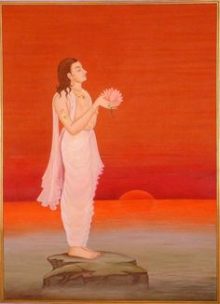 When a human being makes the necessary effort to touch the stillness within himself, only then he knows the joy of movement. Otherwise, people are bewildered by the movement of life. Every change that happens in their life they suffer.
When a human being makes the necessary effort to touch the stillness within himself, only then he knows the joy of movement. Otherwise, people are bewildered by the movement of life. Every change that happens in their life they suffer.
These days, the so-called modern life is like this ~ any change means you must suffer. Childhood is tension, puberty is great suffering, middle age is unbearable, old age is abhorred and feared, and death is celebration ~no that is pure terror.
Every stage of life is a problem because people have a problem with movement, not understanding that the very nature of life is movement. You can only enjoy and celebrate movement if you have one leg stuck in stillness. If you know what stillness is then movement would be a pleasure. If you do not know what stillness is, if you have no contact with stillness, movement is bewildering.
People are trying to track the movement. Looking at the stars, looking at lines in their hands and looking at all kinds of signs including the tea leaves. People want to read the movement of their lives somehow. This struggle with movement, this paranoia about movement, is happening because there is no taste of stillness.
If there was a taste of stillness in you, movement would not disturb you. It is something which sets a certain rhythm. Every rhythm has a beginning and an end; every movement has a beginning and an end. Movement means that which is in transition. Stillness means that which always is. Movement means compulsiveness, stillness means consciousness.
The significance of Makar Sankranti is that it is the time to remind yourself that celebrating movement is possible only when there is a taste of stillness within you.
Regional Celebrations
Because the festival is celebrated in winter, people start preparing food which can give them give them energy and also keep their body warm. Tilguls ~ Laddu of Til (Sesame) is made up of Jaggery and devotees also pay respect to Goddess Saraswati.
This type of sweet is a symbolism for being together in peace and joyfulness, despite the uniqueness and differences between individuals.
People greet each other Happy Sankranti by saying Tilgul Ghya Aani God God Bola.
For most parts of India, this period is a part of early stages of the Rabi crop and agricultural cycle, where crops have been sown and the hard work in the fields is mostly over. The time thus signifies a period of socializing and families enjoying each other’s company, taking care of the cattle, and celebrating around bonfires.
The Makar Sankranti festival is also known and referred to as the harvest festival because this is the time when harvesting is complete and there are big celebrations. This is the day we acknowledge all those who assisted in making the harvest. The farm animals play a huge role in harvesting, so the following day is for them and is called Mattu Pongal.
The first day is for the earth, the second is for us and the third is for the animals and livestock. See, they are placed a little higher than us because we exist because of them, they do not exist because of us. If we were not here, they would all be free and happy. But if they were not here, we couldn’t live.
These festivals are a reminder that we need to craft our present and our future in a conscious manner.
Also, on this day there are several Melas or fairs which are been held and one of the most famous among all melas is Kumbh Mela. It is been held every 12 years at one of four holy locations namely Haridwar, Prayag, Ujjain and Nashik.
The Magh Mela which is the mini mela is held annually at Prayag, the Gangasagar Mela held at the Ganges River, Tusu Mela in parts of Jharkhand and West Bengal and many more such fairs are been held on this auspicious day.
Regional Names
Known by different names and celebrated with different customs in different parts of the region, Makara or Makar Sankranti is an important pan-Indian solar festival observed on the same date, sometimes for multiple dates.
It is known as Pongal in Tamil Nadu, Pedda Panduga in Andhra Pradesh, Biku in Assam, Magha Mela in parts of central and north India, as Makar Sankranti in the west, and by other names. The festivities associated with Makar Sankranti are known by various names such as Lohri by north Indian Hindus and Sikhs, Sukarat in central India, Bhogali Bihu by Assamese Hindus, and Pongal by Tamil and other south Indian Hindus.
Wikipedia gives us this list:
- Suggi Habba, Makar Sankramana , Makara Sankranthi: Karnataka
- Makar Sankranthi: Andhra Pradesh, Telangana, Kerala
- Makar Sankranti: Chhattisgarh, Goa, Odisha, Bihar, Jharkhand, Madhya Pradesh, Maharashtra, Manipur, Rajasthan, Sikkim, Tripura, Uttar Pradesh, Uttarakhand, West Bengal and Jammu
- Thai Pongal, Uzhavar Thirunal: Tamil Nadu
- Uttarayan: Gujarat
- Maghi: Haryana, Himachal Pradesh and Punjab.
- Magh Bihu or Bhogali Bihu: Assam
- Shishur Saenkraat: Kashmir Valley
- Khichdi: Uttar Pradesh and western Bihar
- Poush Sangkranti: West Bengal
- Tila Sakrait: Mithila
In other countries too the day is celebrated by Hindus, but under different names and in different ways.
- Nepal: Maghe Sankranti or Maghi- /Khichdi Sankranti
- Bangladesh: Shakrain/ Poush Sangkranti
- Pakistan: (Sindh): Tirmoori
Sources:
The Dōngzhì Festival or Winter Solstice Festival is one of the most important festivals celebrated by the Chinese and other East Asians during the Dōngzhì solar term (winter solstice) on or around December 22 when sunshine is weakest and daylight shortest.
The origins of this festival can be traced back to the yin and yang philosophy of balance and harmony in the cosmos. After this celebration, there will be days with longer daylight hours and therefore an increase in positive energy flowing in. The philosophical significance of this is symbolized by the I Ching hexagram fù (復, “Returning”).
To really get a feel for the Dōngzhì Festival, you have to imagine hard, rural living during a gray Han Dynasty winter more than 2,000 years ago.
Now picture a family meal at a table set with hearty, warming foods, raising the hopes for spring’s arrival. That’s the spirit of the Dōngzhì Festival.
The Dōngzhì Festival marries the winter solstice with nature’s harmonious balance of yin and yang energy. From this point forward, dongzhi (i.e. the extreme of winter) and the negative yin qualities of darkness and cold give way to the positive yang qualities of light and warmth. In other words, take heart — spring will come.
Traditional activities
Traditionally, the Dōngzhì Festival was a day to regroup with a family get together before tackling the last leg of winter. Today, with survival less of a daily concern and no time off granted, the Dōngzhì Festival is celebrated mostly with a family meal full of warm, hearty foods. One activity that occurs during these get togethers (especially in the southern parts of China and in Chinese communities overseas) is the making and eating of tangyuan, or balls of glutinous rice, which symbolize reunion.
Tangyuan are made of glutinous rice flour and sometimes brightly colored. Each family member receives at least one large tangyuan in addition to several small ones. The flour balls may be plain or stuffed. They are cooked in a sweet soup or savory broth with both the ball and the soup/broth served in one bowl. It is also often served with a mildly alcoholic unfiltered rice wine containing whole grains of glutinous rice (and often also Sweet Osmanthus flowers), called jiuniang.
- Here’s a recipe for Glutinous Rice Balls
In northern China, people typically eat dumplings on Dōngzhì. It is said to have originated from Zhang Zhongjing in the Han Dynasty. On one cold winter day, he saw the poor suffering from chilblains on their ears. Feeling sympathetic, he ordered his apprentices to make dumplings with lamb and other ingredients, and distribute them among the poor to keep them warm, to keep their ears from getting chilblains.
Since the dumplings were shaped like ears, Zhang named the dish “qùhán jiāoěr tāng” (祛寒嬌耳湯) or dumpling soup that expels the cold. From that time on, it has been a tradition to eat dumplings on the day of Dōngzhì.
- Here’s a recipe for Lamb Dumplings
Old traditions also require people with the same surname or from the same clan to gather at their ancestral temples to worship on this day. There is always a grand reunion dinner following the sacrificial ceremony.
The festive food is also a reminder that we are now a year older and should behave better in the coming year. Even today, many Chinese around the world, especially the elderly, still insist that one is “a year older” right after the Dōngzhì celebration instead of waiting for the Chinese New Year.
In Taiwan
To Taiwanese people, the festival in winter also plays a very important role. It is also a tradition for Taiwanese to eat tangyuan on this day. They also use the festive food as an offering dish to worship the ancestors.
In an interesting twist, in accordance with ancient Taiwanese history, many people take some of the tangyuan that have been used as offerings and stick them on the back of the door or on windows and tables and chairs. These “empowered” tangyuan supposedly serve as protective talismans to keep evil spirits from coming close to children.
 In addition to following some of the customs practiced in China, the people of Taiwan have their own unique custom of offering nine-layer cakes as a ceremonial sacrifice to worship their ancestors.
In addition to following some of the customs practiced in China, the people of Taiwan have their own unique custom of offering nine-layer cakes as a ceremonial sacrifice to worship their ancestors.
- Here’s a recipe for Nine Layer Cake
These cakes are made using glutinous rice flour in the shape of a chicken, duck, tortoise, pig, cow or sheep, and then steamed in different layers of a pot. These animals all signify auspiciousness in Chinese tradition.
Another interesting custom in Taiwan is that many people take invigorating tonic foods during this particular winter festival. To the Taiwanese, winter is a time when most physical activities should be limited and you should eat well to nourish your body. This practice follows the habits shown by many animals which follow the law of nature and hibernate throughout winter months to rejuvenate and to preserve life. In order to fight cold temperatures, it is necessary to eat more fatty and meaty foods during winter when your body can better absorb the rich and nutritional foods at this time due to a slower metabolic rate.
Since Dōngzhì is the “Extreme of Winter”, Taiwanese regard it as the best time of the year to take tonic foods. Some of the most widely popular winter tonic foods enjoyed by Taiwanese to fight cold and strengthen the body’s resistance are mutton hot pot and ginger duck hot pot. Other foods like chicken, pork and abalone are also common materials used in making tonic foods with nurturing herbs such as ginseng, deer horn and the fungus cordyceps.
Source: Wikipedia
In northern China, people eat lamb dumplings for the Dōngzhì Festival, a tribute to the Han Dynasty physician, Zhang Zhongjing, who served this warming food to poor farmers suffering from frostbite during one particularly cold winter.
Celebrating the Dōngzhì Festival is all about understanding the simple enjoyment of a warm, fortifying meal on a cold winter night in ancient China. It’s that same feeling you had as a child when you came in from a day of playing in the snow to a cup of hot cocoa or a bowl of steaming soup.
Against that backdrop, this lamb dumpling recipe is the perfect match. The rustic taste of lamb, combined with a black vinegar and chili dipping sauce, gives these dumplings a distinctly northern Chinese flavor. A perfect meal to serve during the depths of winter.
In contrast to traditional pork dumplings, which can be fried as potstickers, these lamb dumplings are either steamed or boiled in thin gow gee dumpling wrappers. The boiled dumplings are soft and slippery, while the steamed dumplings are more elastic, but both versions produce a satisfying broth that makes the dumplings feel like xiao long bao.
If your Chinese market is in a predominantly Cantonese neighborhood, you may find that it doesn’t carry lamb. In that case, a halal market will probably be your next best bet. Make sure to pick a relatively fatty ground lamb mix, so that your dumplings produce a rich broth.
Lamb Dumplings Recipe
Ingredients
- 10 ounces Chinese cabbage
- 1/2 teaspoon salt
- 1 pound ground lamb
- 4 tablespoons Shaoxing rice wine
- 4 tablespoons dark soy sauce
- 1 tablespoon dark soy sauce
- 1 tablespoon ginger
- 4 green onions
- 1 teaspoon cumin
- 80 gow gee dumpling wrappers
Directions
1. Finely mince the cabbage in a food processor. Place in a large bowl, sprinkle with the salt and set aside for 10 minutes.
2. Add the lamb, ginger, green onion, soy sauce, rice wine and cumin to the food processor. Pulse 5 times until the ingredients are combined well. Set aside.
3. Place the cabbage on a kitchen cloth, twist the top and squeeze out as much liquid as you can. Add the dry cabbage to your pork mixture and combine in the food processor with another 5 pulses.
4. Spoon 1 rounded teaspoon of the filling mixture in the center of each dumpling wrapper. To wrap a dumpling, dab water along the inside edge of the wrapper, fold in half to form a semicircle enclosing the filling, then seal the edges together to stick. Finally, fold 5-6 small pleats around the top edge of the dumpling. Repeat until all of your dumplings are done.
5. Separate the dumplings you’ll need for your meal and then freeze the rest in a heavy plastic bag for later.
6. There are two easy ways to cook dumplings.
– To boil: Bring a large pot of water to a boil. Add 15 dumplings to the pot and boil for 9 minutes, stirring occasionally to prevent them from sticking to the bottom of the pot. Remove the dumplings from the heat and drain, repeating with any remaining dumplings.
– To steam: Place a bamboo steamer in a large pot or wok and heat water to a boil. Place 15 dumplings in a single layer in the bamboo steamer, cover and steam for 9 minutes. Remove the dumplings from the heat.
7. Serve immediately with chili sauce, black vinegar or soy sauce for dipping.
Makes: 70-80 Dumplings | Prep Time: 1 Hour | Cook Time: 10 Minutes
Source: Chinese American Family
Nine Layer Cake, also known as 九层糕 in Chinese, or Kueh Lapis in Malay, is a well-loved Singaporean tea-time treat, famous for its nine distinctive colors. This cake is traditionally eaten during the Double Ninth festival, it is also a popular choice for breakfast or dessert.
During the Winter Solstice, the people of Taiwan have their own unique custom of offering nine-layer cakes as a ceremonial sacrifice to worship their ancestors. These cakes are made using glutinous rice flour in the shape of a chicken, duck, tortoise, pig, cow or sheep, and then steamed in different layers of a pot. These animals all signify auspiciousness in Chinese tradition.
“The making of this Kueh is a carefully handcrafted process, which requires patience, dedication and love; each layer must be treated with delicacy.”
Ingredients
- 400g tapioca flour, sieved
- 80g rice flour, sieved
- 1kg coconut milk
- 6 ½ cups water
- 400g white sugar
- ¾ tsp salt
- Pandan leaves
- 5 different food coloring, depending on personal preference
Directions
Boil the sugar and pandan leaves in a pot of water. Add a pinch of salt. Boil till the sugar dissolves completely. Set aside to cool completely. Strain to remove the leaves.
Mix tapioca flour and rice flour together in a mixing bowl. Add the pandan leaves-sugar mixture to the flour mixture. Mix well until a smooth consistency is achieved.
Sieve the coconut milk and add into the dough mixture. Mix well until a smooth and silky consistency is achieved.
Divide the mixture equally into 5 bowls. Add a different food coloring to each bowl.
Brush a tray with oil that has been cooked with pandan leaves. Put the tray in a steamer, be careful not to drip water vapor into the tray. Steam each colored layer for about 5 minutes, starting with the white layer and ending with the brightest color.
Repeat the process until the mixture is used up.
Remove the tray from the steamer and set aside to cool completely. Remove Kueh from the tray and cut into serving portions.
Tips
- Strain the coconut milk and sieve the flour to achieve a smooth consistency.
- Breaking up the veins of the pandan leaves help the aromatic fragrance to be extracted more easily. If you prefer, you can also cut the pandan leaves into small pieces instead. However we prefer to tie the leaves together so they can be easily removed.
- Always stir the batter before pouring in each layer to ensure a uniform consistency.
- Always check that the previous layer has completely set before adding the next layer.
- Ensure that the Kueh Lapis is completely cool before attempting to remove it from the tray, otherwise it may stick to the pan and be very difficult to cut.
- You can wrap any leftover Kueh Lapis in plastic to prevent them from sticking together, then store in the fridge.
Source: My Singapore Food
- 1/4 cup sugar
- 2 egg yolks
- 1/2 cup salted butter
- 1 cup all-purpose flour
- 1 cup strawberry (or your favorite) jam
(traditionally red bean paste is used so if you want a more authentic version, you can use a can of red bean paste instead of the jam)
Directions:
- Preheat the oven to 375 degrees.
- Combine the butter, sugar and 1 egg yolk and stir.
- Mix in the flour.
- Form the dough into one large ball and wrap it in plastic wrap.
- Refrigerate dough for half an hour.
- Unwrap the chilled dough and form small balls in the palms of your hand.
- Make a hole with your thumb in the center of each mooncake and fill with about half a teaspoon of jam.
- Brush each cake with the other beaten egg yolk and place on a cookie sheet.
- Bake for about 20 minutes or just until the outside edges are slightly brown
Makes 24
Source: Unknown
The Mid-Autumn Festival, also known as the Moon Festival, is a popular East Asian celebration of abundance and togetherness, dating back over 3,000 years to China’s Zhou Dynasty. In Malaysia and Singapore, it is also sometimes referred to as the Lantern Festival or “Mooncake Festival.”
The Mid-Autumn Festival falls on the 15th day of the 8th lunar month of the Chinese calendar (usually around mid- or late-September in the Gregorian calendar), a date that parallels the Autumn Equinox of the solar calendar. The moon festival is celebrated on the full moon closest to the Autumn Equinox, which sometimes falls in October. This is the ideal time, when the moon is at its fullest and brightest, to celebrate the abundance of the summer’s harvest. The traditional food of this festival is the mooncake, of which there are many different varieties.
The Moon Festival is full of legendary stories. Legend says that Chang Er flew to the moon, where she has lived ever since. You might see her dancing on the moon during the Moon Festival. The Moon Festival is also an occasion for family reunions. When the full moon rises, families get together to watch the full moon, eat moon cakes, and sing moon poems. With the full moon, the legend, the family and the poems, you can’t help thinking that this is really a perfect world. That is why the Chinese are so fond of the Moon Festival.
The Moon Festival is also a romantic one. A perfect night for the festival is if it is a quiet night without a silk of cloud and with a little mild breeze from the sea. Lovers spend such a romatic night together tasting the delicious moon cake with some wine while watching the full moon. Even for a couple who can’t be together, they can still enjoy the night by watching the moon at the same time so it seems that they are together at that hour. A great number of poetry has been devoted to this romantic festival. Hope the Moon Festival will bring you happiness.
Farmers celebrate the end of the summer harvesting season on this date. Traditionally, on this day, Chinese family members and friends will gather to admire the bright mid-autumn harvest moon, and eat moon cakes and pomeloes together. Accompanying the celebration, there are additional cultural or regional customs, such as:
- Eating moon cakes outside under the moon
- Putting pomelo rinds on one’s head
- Carrying brightly lit lanterns
- Burning incense in reverence to deities including Chang’e
- Planting Mid-Autumn trees
- Collecting dandelion leaves and distributing them evenly among family members
- Lighting lanterns on towers
- Fire Dragon Dances
- Shops selling mooncakes, before the festival, often display pictures of Chang’e floating to the moon.
Stories behind the festival can be found at Widdershins:
The Moon Cake Uprising
In late Yuan Dynasty (1271 – 1368 AD), people in many parts of the country could not bear the cruel rule of the government and rose in revolt. Zhu Yuanzhang, founder of Ming Dynasty (1368 – 1644 AD), united the different resistance forces and wanted to organize an uprising. However, due to the narrow search by government, it was very difficult to pass messages.
The counselor Liu Bowen later though out the great idea of hiding notes with “uprise on the night of August 15th” in moon cakes and had them sent to different resistance forces. The uprising turned to be very successful and Zhu was so happy that he awarded his subjects with moon cakes on the following Mid-Autumn Festival. Since then, eating moon cakes has been a custom on Mid-Autumn Festival.
Sources: Wikipedia and Travel China Guide
Boryeong, South Korea: The mud trucked in to Daecheon Beach for the festival is said to have cosmetic effects, but that isn’t why 2 million or so ex-pats, locals and tourists muck it up, slathering themselves in mud while slinging beer and soju in Ziploc bags. It’s just down-and-dirty fun. There’s also mud-skiing, a mud king contest, as well as fireworks at night. Tip: take a dip before you leave.
About This Festival
Getting dirty has never been so much fun. Beauty product for some, excuse to channel their inner child for others, Boryeong Mud means many things to many people. This filthy festival involves wrestling, sliding, massages, and photo contests. The dates vary from year to year. In 2016, it was held July 16 thru July 24.
A Dirty Marketing Idea is Born
The idea for the festival began in 1998 as a promotion for the mineral-rich mud found near Boryeong, South Korea. When the manufacturers of Boryeong Mud products determined the beneficial effects of their local mud, they invited visitors to slather themselves in the stuff. The event took on a life of its own rather quickly, attracting thousands of visitors to this otherwise sleepy town annually for the beach, the warm weather, and, of course, the mud.
Things Get Dirty Fast
Fueled by word of mouth, good times and exceptional photographs of mud people, the festival has become an international phenomenon. Families picnic under beach umbrellas, toddlers splash in the kid-friendly area, and the under-30 crowd (generally traveling English teachers, members of the military, and students) are the front-and-center partiers inside an inflatable mud wonderland. Festival-goers have their pick of competitive activities like the Mr. Mud contest, mud wrestling, mud races and even a mud boot camp. Those looking for a more laid back experience can opt for mud facials, body painting, pottery demos, soap-making and lounging on Daecheon Beach.
There’s no need to worry about getting all this gooey grey mud out of your hair, either: showers are abundant and available for a modest fee, as are lockers that can be used to store a fresh and clean outfit. Rinsing off in the ocean is also an option, albeit a less effective one if you plan to impress after your mudbath. Finally, after you’ve wallowed in Boryeong’s thick gray ooze, you can pick up some of the local beauty products, including mudpacks, mud shampoo, mud soap, mud sunblock – remember, this was the original intention of this festival!
More Than Just Mud
Although the main attraction is, of course, the mud, Boryeong features an impressive entertainment lineup as well. Pop and hip-hop performers from around the world affirm its status as an international event, providing an eclectic soundtrack to the wet and wild madness. Don’t miss the huge global rave on the evening of the closing ceremonies, or Friday’s Korean b-boy show. Keep your eye out for opening and closing night fireworks, as well as parades and other cultural performances during the week.
In the end, the thing that sets Boryeong apart is the mud play. The spirit of conviviality across cultures and ages is a function of the anonymity everyone experiences while covered in mud. As Jae-Sang Lee, Director of Korea Tourism Organization, says, “The most distinctive point of the Festival is to create a united place where people from all over the world come together, meet and interact with strangers and are able to break down walls of age, nationality, race and have fun together and leave with memories and new friends.” All are one under the mud.
Sources:
Everfest
Samuitimes
Mud Festival – The official page
